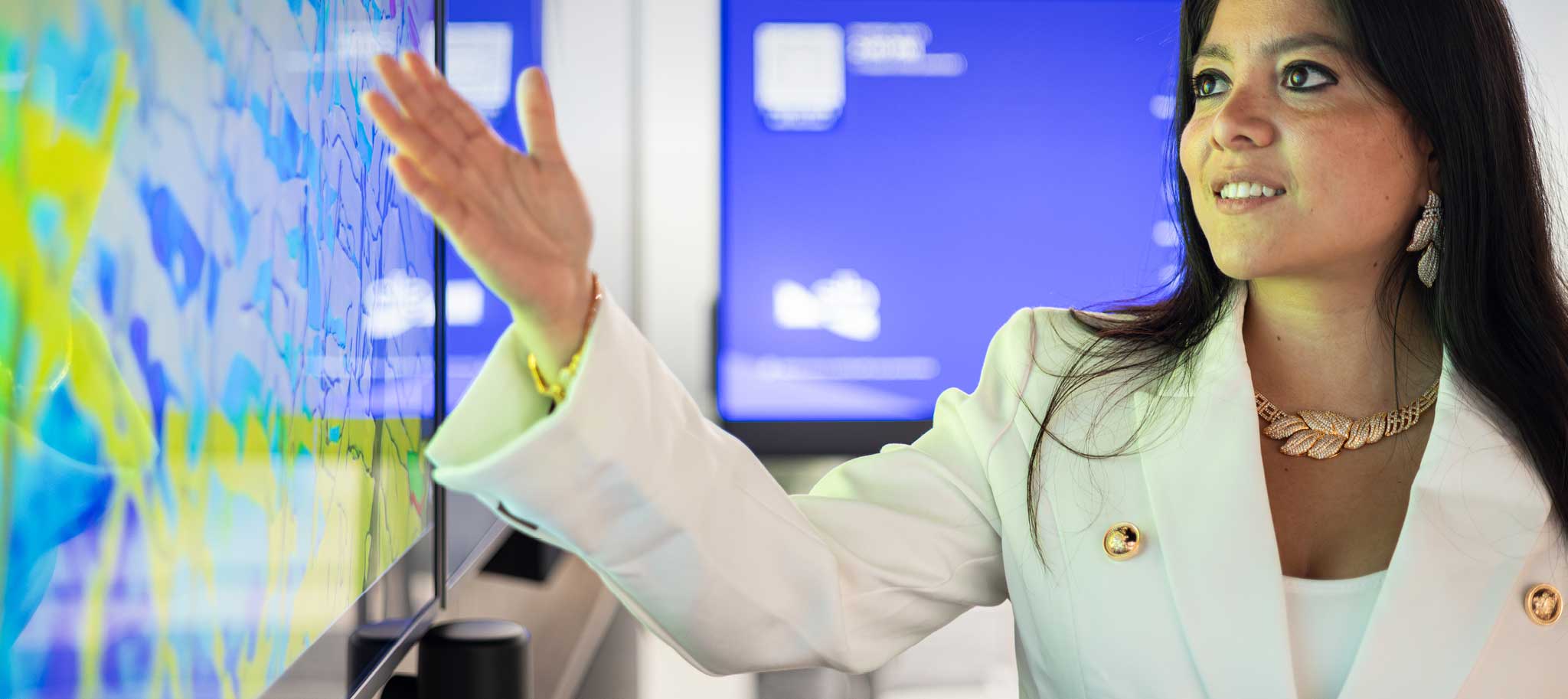In this article
Use the main characteristics of a modern communications strategy as a checklist for rebuilding trust in your own brand:
- Get to know your audience, along with how many distinct ones there are.
- Leave the jargon behind and speak clearly.
- Enable collaboration between communicators and technical experts.
- Trade natural human bias for tangible facts.
- Realize that sensationalism is not the emotional storytelling you’re looking for.
- Turn your data into narratives, especially for the younger generation.
- Humanize your storytelling if you want it to appeal to other humans.
The future of today’s energy sector is actively being shaped by innovative tech and advancements that aim to create a lesser impact on the environment. And as more energy companies leverage cutting-edge digital solutions, they’re redefining the role of traditional energy players in the global push to cleaner, more affordable, and more secure energy.
This is a complex transition that’s steadily unfolding amid rising greenhouse gas emissions and heightened demands for decarbonization. As a result, there’s now growing pressure for energy companies to clearly articulate their contributions to building a more reliable energy future. While that may sound like a challenge, we see it as an opportunity to solidify people’s trust in what we—as an industry—bring to the table.
In energy communications, transparency is key.
The energy industry is at a pivotal moment as the energy transition advances. Conversations are more emotional—and, therefore, more critical—as public perception remains heavily influenced by environmental concerns. This subsequently requires more effective communications strategies on the energy industry’s part. We must do a better job of putting the “tech” in “technical” if we are to broaden the understanding of what we do, how it’s evolving, and why that contributes to the world’s bigger goals.
All of this requires trust, a scarce element these days for large organizations across all industries. The 2025 Edelman Trust Barometer, for example, shows that most people (61% to be exact) have a moderate or high sense of grievance towards large institutions and companies. Their assumption is that these organizations don't always prioritize the interests of the wider community or population, which, as you can imagine, affects trust.
Meanwhile, there’s never been a time when the word “authenticity” was spoken as much as it is today or when a brand’s ethical practices were more important than its celebrity. It’s easy to see that energy companies risk losing the trust and confidence they still have—the trust and confidence needed to lead in the energy transition—if they don’t focus on bridging the current gap between internal innovation and external understanding.
But rebuilding trust and confidence in this space while encouraging public support and understanding requires consistent and transparent communication. It requires communication that emphasizes tangible progress and societal benefits, leading our audiences to their own “aha!” moments of realizing how energy innovation truly works.
Using strategic communications to rebuild trust in the energy sector.
So, how do we do that? How do we translate the technical aspects of energy innovation (i.e., what our organizations are researching, building, and spending on) into messages that a wide range of audiences—employees, investors, customers, partners, the media, and the wider public—can understand?
To better bridge this gap between what we as energy organizations say and what the rest of the world hears, the energy industry must share comprehensive, transparent, and traceable roadmaps that align with the global shift toward sustainability. And as comms professionals ourselves, we’ve witnessed the balance energy companies must strike between authentic environmental stewardship and public perception. Between the needs of many and the opinions of few. Between long-term impact and short-term trends.
These are some of the approaches we’ve seen work well.
It’s all about your audience—each and every one of them.
Effective communication follows a simple rule: If your message isn’t understood, then it isn’t communicated well enough. The first step in sending a clear message is getting to know your audience. While some stakeholders, such as industry peers, might appreciate technical detail, others (e.g., the general public or investors) value relevance over depth.
To connect with these groups, meet them where they are. Understand what platforms or media they utilize, what they’re interested in, and how they consume information organically. Acknowledge the role of social media in their daily lives and offer the education (think science tutorials) they need to build their energy-related knowledge.
In other words, put yourself in their shoes to better align with their habits and perspectives on what is important. It’s a task that’s often overlooked, but segmenting your audience based on their familiarity with the subject and tailoring your messaging accordingly is fundamental to relaying your importance in the world.
Leave the jargon behind and speak clearly.
It’s no secret that many people perceive technical industries as inaccessible due to their overly complex messaging. When companies focus solely on internal experts, they risk alienating broader audiences who want to see actionable and relatable progress.
A significant part of the problem in communicating complex information to diverse audiences lies in the overuse of industry-specific jargon. Excessive jargon can alienate non-expert audiences, leading to disengagement and reduced understanding. It can also undermine the communicator’s credibility, especially when clarity remains crucial to building trust.
Remember that translating technical language doesn’t mean watering it down. There's a balance between simplicity and accuracy that can ensure your message is both accessible and credible. Find it. Replace complex terms with plain language wherever possible but retain essential terminology for accuracy.
Collaborate for both accuracy and clarity.
A close collaboration between communicator and technical expert is what builds the best trust and ensures the resulting narrative aligns with an innovation’s core purpose. Why? Because only by combining their distinct skill sets and knowledge can you craft brand messages that are engaging yet technically sound.
To do that, we recommend following a handful of steps:
- The communicator reviews a set of technical materials in search of their own clear understanding of the innovation at hand. They know that they cannot highlight the important details in a simple and engaging way if they don’t comprehend the details enough themselves.
- Combining that understanding with the brand’s positioning and overarching messaging, the communicator begins crafting the innovation’s story, posing questions directly to the technical expert when necessary.
- The technical expert reviews the content to validate its accuracy, while communicators ensure that any language added continues resonating with all target audiences.
- The final content is tested with other reviewers (but not too many) to double and triple check that it's comprehensible for readers beyond the core group.
It’s a simple flow but an effective one.
Trade natural bias for tangible facts.
All humans have biases that can influence how we perceive, interpret, and most importantly present and communicate information to others. It’s nothing to be ashamed of, but it is something to be vigilant about. Communicating innovation—especially that relating to sustainability—in a way that renders it well understood requires that we set all biases aside and go strictly by the facts.
As energy experts, we’re closest to the source, meaning we're responsible for becoming trusted voices in society. Our language must be factual rather than generalized, be precise when stating information, and provide evidence (e.g., concrete examples) that supports our claims. And it must avoid biased wording that signals any kind of judgment or prejudice.
Unbiased communication allows us to confront perspectives that differ from our own. It encourages us to constantly educate ourselves to better educate others. To explore multiple angles whenever possible, providing valid and relevant information that allows the audience to decide for themselves which angle to follow. It’s an exercise that fuels creativity, keeps us on our toes, helps us adapt to new challenges, and maintains our relevance for the audience. It generates content marked by quality, credibility, and effectiveness. But most importantly, it brings our readers closer to what they want: the truth.
Aim for utility, not sensationalism.
The media has a never-ending drive to cater to people’s need for entertainment, drama, and immediate gratification, which is why it seems every headline is dominated by sensationalism. This gives people the false impression that sensational communication is the kind of “emotional storytelling” that does a better job of cutting through the noise. But that’s not the storytelling we’ve been alluding to.
Effective storytelling evokes emotions in a way that’s conducive to the audience’s understanding of the message. Sensationalism, on the other hand, generates headlines that trigger dopamine in one’s body, hooks them into reading more, yet disappoints them with the content’s lack of depth. Feeling unsatisfied, readers venture to the next sensational headline, craving some kind of emotional nourishment, and the cycle continues.
While this process might work well for the platform in the middle, it tends to harm both the communicator and reader. One might also say that it’s a waste of resources, given that the content doesn’t deliver—and, therefore, doesn’t stick. Not to mention that it can have lasting negative effects given its misleading tendencies and (if you ask us) unethical usage of emotions to a brand’s advantage.
Storytelling is what allows you to create sustainable engagement with your audience, so they may relate to the challenge your company is facing or the problem it’s solving. Its objective is to break down complex information in a way that’s easy to digest, using precise language to depict a clear picture to the audience.
The goal? To ensure the content is useful to the audience, either for educational or inspirational reasons. It should stimulate them, enticing them to come back for more. Once you master the art of communicating at an eye-to-eye level, you become and remain relevant. It’s a roadmap for building loyalty among an audience that actively looks for your content because they know it matters.
Turn your data into narratives.
Miscommunication often leaves audiences feeling excluded, which fuels misconceptions about a company’s intentions and contributions. To overcome this, companies must prioritize transparency, accessibility, and relatability, ensuring their innovations resonate with all stakeholder groups. They must translate what they do into the implications it has on people’s daily lives if they wish to transform public skepticism into active support.
A big part of that is storytelling. Visual storytelling, for example, is known for being incredibly effective in conveying complex information more clearly and making it more engaging. But visuals in and of themselves won’t improve your communications. It’s the data points that often require more explanation.
If an important metric has increased by a certain percentage, then it’s not enough to simply state that growth. The relevance of that metric must be described in terms of how it affects people’s lives. Not to mention that people (especially those in younger age groups) are increasingly interested in understanding how metrics are calculated. That’s another opportunity to make an impact: Educate the audience on how the various insights and analytics in the energy space are gathered—and why.
Humanize your storytelling to generate trust.
Remember to also impress upon your experts the need to humanize the message, especially for external audiences. Sharing stories about the people behind the innovations or highlighting the potential beneficiaries creates emotional connections that engage all stakeholders on a deeper level. So, make sure to ask yourself every time: Whose story is this?
For while producing useful content may increase the durability of your audience engagement, it won’t reach its full potential until you make it about people. If you want a more profound connection to be established between your brand and its audience—if you want them to truly trust you—then you must tap into the fundamental psychological need we humans have: connection.
Readers want to get to know the people behind the energy industry, the people solving some of the most challenging tasks our society faces. Which means a modern communications strategy doesn't just translate the profound knowledge of brilliant employees into something widely understandable; it also puts names and faces on that content to foster more openness and receptivity in the audience.
Only then will our large organizations, formerly seen as unattainable, become relatable. We’ll focus on internal ambassadors who communicate our brand purpose, thereby creating transparency and honesty among our audience. This helps remove bias and build a community that actively seeks information from us, information they believe they can trust.
Look at us writing energy’s new story.
As part of a global industry, energy leaders must realize that compelling communication is a key contributor to their success. This is the era of content creation, self-development, and informed decisions, meaning that the hunger for knowledge is there. But our audiences are vast and diverse, and we need to reach them individually if we want our groundbreaking innovations to inspire, educate, and engage.
At the heart of this effort lies a commitment to painting a clearer picture of our visions for the future. We must bridge the gap between innovation and understanding to drive the changes needed for a more energy efficient world. Because, while the energy industry may be in a position to lead that innovation, the journey isn’t ours alone to take.
We challenge you to remember the approaches we described the next time you read an industry post or article and see if you can differentiate between a well-written text fueled by facts and one that’s sustaining itself through mere emotions. It’s essential because with great power comes great responsibility. And at the end of the day, empowering stakeholders to join this transformative journey in a cognizant and informed way is a responsibility we all share.





